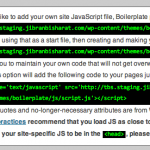
Some context
I am working on a WooCommerce installation where I’m dealing with literally thousands of historical orders. All of which I am programmatically importing (including user accounts!) and doing a bunch of special updates, which are numerous and complicated, but not the subject of this post. But this gives you enough context on which to move forward.
As I develop this import tool, these thousands of orders need to be removed (or “trashed”) after each test I make (finding and fixing bugs) because naturally you can’t have duplicate orders. Am I right or what?
The WooCommerce order admin interface is robust and powerful, but not for bulk trashing. I can only send around a maximum of 350 orders to the trash at any one time. So this process of “resetting” the orders is time consuming and cumbersome.
I searched and thought and searched and thought some more, wondering how to quickly trash every single one of those damned orders after each test. And then I remembered: an order is just a custom content type. Well I didn’t forget, but if you’ve ever developed anything, you’re jugging hundreds of lines of code and switching from language to language and from one task to the next. Not everything you work on is at the forefront of your brain, our human RAM, if you will. I think you’re following me. We basically can’t see the forest through the trees.
But then I did remember.
The solution
The order custom content type (shop_order) that is WooCommerce has all the basic functionality that is WordPress. Any content type has a post_status field associated with it and can have values such as: publish, draft, trash, etc. You can read up on post statues, here.
To quickly send all orders to the trash run the following sql command. Super easy. This would work for any content type you’d just need to update the where clause.
update wp_posts set post_status = 'trash' where post_type = 'shop_order';
Then you can go one step further and view your order trash via WordPress admin and click on ‘Empty Trash’. I wouldn’t recommend using this anywhere near a production machine. Use at your own risk. 😉
Enjoi.

 I love
I love  If you’ve seen or heard of
If you’ve seen or heard of 


Recent Comments